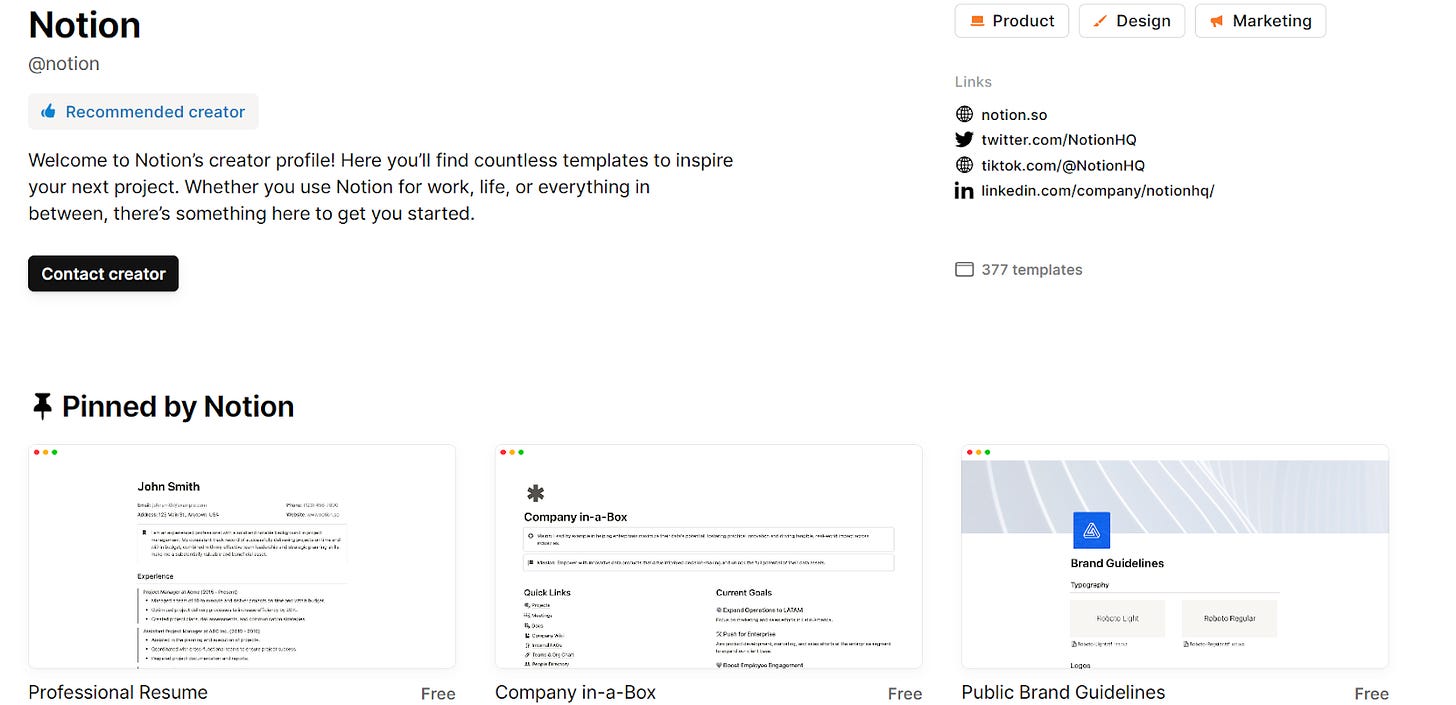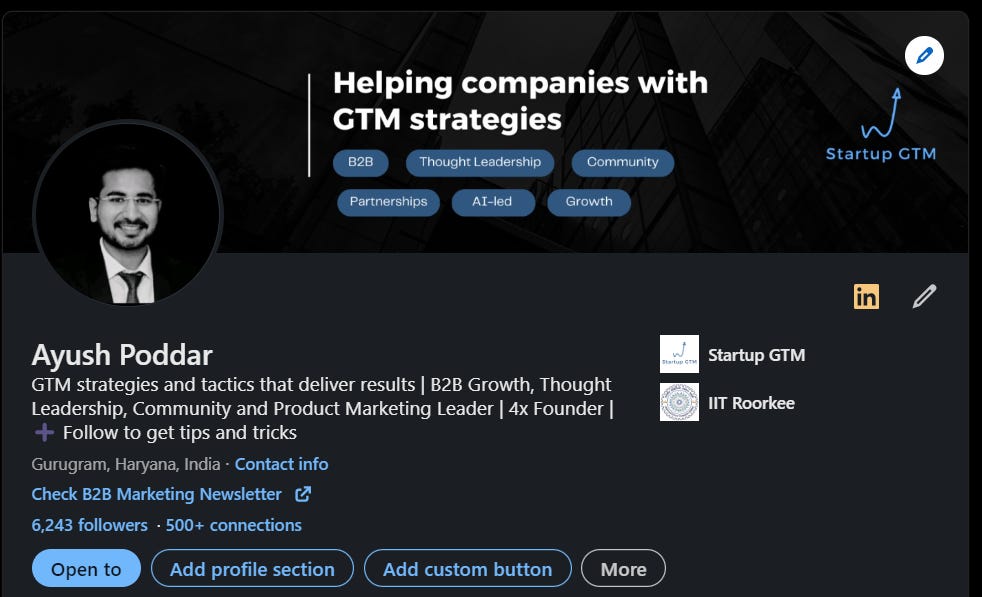Network Effects in SaaS : A Desired Moat (Part 1 of 3)
Discover how network effects enhance SaaS platforms, driving user engagement and competitive advantage. Identify, evaluate, implement and leverage these network effects for scaling your business .
👋 Hey, Ayush here! Welcome to this week’s ✨ free edition ✨ of Startup GTM Newsletter.
I have been building startups for the last 7 years and working with founders on GTM, growth, people-first strategies, communities and anything else about building a startup.
If you’re not a subscriber, here’s what you missed earlier:
Thought Leadership for Demand Generation - Step by Step (Part 1)
Thought Leadership for Demand Generation - Step by Step (Part 2)
Subscribe to get access to these posts, and every post moving forward. Follow me on Linkedin and Twitter. Want to discuss about collaboration or GTM?
SaaS has been a buzzword for quite a while now. Have you ever thought about why some companies are winning in the market and no one dares to compete with them?
You know what's different? "They have a strong moat."
For a while, I have been thinking of writing about moats, especially network effects, which have built successful companies like Uber, Airbnb, WordPress, and Shopify. I decided to write a three-part series on the topic starting with "Network Effects in SaaS: Most Desired Moat."
We will cover the following topics in this part:
→ Why are network effects in SaaS the most desirable?
→ If you don't know, let's brief on network effects.
→ Key network effects that exists
→ Find opportunities in your product for network effects
→ Evaluate the identified opportunities for network effects.
→ Types of network effects that work
Why are network effects in SaaS the most desirable?
It's crucial for you to understand the different types of moats that can protect your B2B SaaS.
Just for clarifying about moats -
A moat is a competitive advantage that cannot be easily replicated. A startup with a moat is more likely to succeed and attract investors because it has a sustainable and defensible position in the market.
Here are top 4 moats for companies that exists today:
Network Effects: A powerful moat where each new user enhances value for all others, creating a barrier that's hard to overcome.
Brand: Strong brand recognition builds customer loyalty and deters potential competitors.
Embedding: Integrating deeply into customer workflows makes switching costs high.
Scale: Achieving scale can lower unit costs and create pricing advantages.
Among these, network effects stand out as particularly compelling. Why? Because they transform user engagement into a strategic asset. Here are five reasons why companies that harness network effects often emerge as winners:
Sticky User Base: The value of the product increases as more participants use it, which not only retains but also attracts new users.
High Switching Costs: The ecosystem built around the product makes leaving less attractive due to the high social and psychological costs.
Hard for Competition: Establishing network effects requires a unique strategy, widening the gap between you and your competitors.
Advocacy: Users naturally become advocates as the platform's value increases with more users.
Exponential Value Creation: Beyond basic functionality, the collective power of users significantly magnifies the product's value.
Considering these factors, how significant do you believe the role of network effects is in your current business strategy?
Could strengthening them transform your competitive edge?
💡Think about where your company stands and what it might take to deepen these effects for your advantage.
If you don't know, let's brief on Network Effects.
"Network effects can create a powerful competitive advantage for B2B companies, as they can increase the value of the platform for all users as more participants join. This can lead to increased customer retention, loyalty, and the creation of a virtuous cycle of growth, where the value of the platform increases with each new user, making it more attractive to potential customers. Ultimately, this can lead to a significant competitive advantage for businesses that leverage network effects effectively." - Sitecore.
Some examples of B2B companies that are leveraging network effects to their advantage:
Salesforce's AppExchange marketplace benefits from indirect network effects, where the value of the platform increases as more developers create and offer their applications.
LinkedIn's professional networking platform benefits from direct network effects, where the value of the platform increases as more professionals join and connect with each other.
Slack's communication platform benefits from both direct and interaction network effects, where the value of the platform increases as more users join and collaborate, and third-party developers create integrations and applications.
Key network effects that exists in B2B products
Here's a closer look at some of the key network effects that companies have already employed for growth:
Communication / Sharing
Platforms like Dropbox thrive as users invite others to share and collaborate, naturally expanding the network’s reach and utility.
Collaborative Networks
Tools like Asana enable users to work on projects either publicly or within private groups, enhancing productivity through shared efforts.
Shared Expertise
On platforms like Stack Overflow, users leverage and contribute to a vast pool of knowledge, including best practices and specialized templates, enriching the community's overall expertise.
Community Standards
Users of platforms like WordPress help set security protocols and operational standards, which not only improve the platform for their use but also for future users.
Innovative Customization:
Salesforce users create and share custom solutions like specialized workflows or dashboards, tailored to diverse business needs, which in turn become integral to the platform’s ecosystem.
Community Engagement:
Hubspot has fostered a vast community where inbound marketers share insights, establish best practices, and generate content that attracts more users and engagement.
Professional Development:
Tools like Google Analytics have evolved beyond just platforms, with certifications and educational paths turning them into career-enhancing skills.
Any thoughts on how your product might further engage users to leverage these types of network effects? Could deepening user interaction and community involvement be the key to elevating your platform’s strategic value?
Find opportunities in your product for network effects
Identifying opportunities for network effects within your SaaS product involves a thorough evaluation of your ecosystem -
ranging from customer segments, actual users to complementary products and expert services.
Here's how to find and leverage these opportunities:
→ Internal Collaboration: Find scenarios where different user groups, such as designers or analysts, collaborate directly on your platform. This interaction enhances the product's stickiness and intrinsic value.
→ External Consulting Integration: See if you can create connections between your users and external consultants, like Webflow Builders or Salesforce consultants. This expands your service’s functionality and enhances user dependency.
→ Upskilling and Certification: If you are building a new category which outshines the existing solutions and customers are loving it, try introducing certifications and training, such as HubSpot's Inbound Certification, that validate user expertise and encourage deeper platform engagement.
→ Expert Resources: Incorporate expert-generated content, like Airtable or Notion templates, directly into your platform to simplify user tasks and improve their experience.
→ Customization and Workflow Integration: Enable users to create and share their own workflows or solutions, such as no-code templates or themes. This not only improves user experience but also attracts new users looking for specialized solutions.
→ Complementary Partnerships: Work with other vendors to provide integrations that offer a more holistic solution, similar to partnerships formed by Salesforce and HubSpot. This broadens your platform’s appeal and utility.
→ Community and Networking: Build and nurture a community around your product or brand or domain, where users can discuss problems and share solutions, fostering a network where each member’s participation adds value for others.
→ Co-Marketing / Partnership Opportunities: In tools aimed at marketing and sales, you can invite users to collaborate on co-marketing or partnership opportunities with each other, enhancing reach and effectiveness through shared efforts.
As you explore these avenues, consider: Which of these opportunities are currently underutilized within your ecosystem?
How can enhancing these areas with network effects transform your platform into a more essential and entrenched tool in your users' daily operations?
Let’s identify and implement strategies that not only meet the immediate needs of your users but also ensure they become integral to the broader ecosystem.
Evaluate the identified opportunities for Network Effects
To fully capitalize on network effects within your product, it’s essential to rigorously evaluate the identified opportunities.
Here’s a streamlined approach to evaluate potential network effects:
Important to have vs. Nice to have
Determine whether the feature is crucial for your users’ success or just a nice addition. Focus on those that are "important to have" to drive meaningful engagement.
Value Multiplication
Aim for features that can triple the value your customers derive from the platform. This could mean enhancing functionalities that lead to significant time savings through collaboration tools, best practices, or templates.
Productivity Gains
Evaluate how a feature can perpetuate productivity, such as a tool that allows users to create templates that can be reused indefinitely or features that streamline workflows for entire teams.
Cost Reduction:
Consider opportunities that reduce costs for users, such as providing access to expert resources, templates, or consulting at a lower price point than competitors.
Revenue Enhancement:
For sales and marketing tools, assess how the feature could help in reaching / engaging potential customers and thereby increase revenue opportunities.
Security and Privacy:
Ensure that any new feature or community element respects user privacy and intellectual property, maintaining high standards of security and trust.
Exclusivity and Status:
Analyze whether being part of your platform gives users a sense of exclusivity or prestige, such as being a member of niche communities like SalesHacker.
How do these opportunities align with your strategic objectives? Are you enhancing your product in ways that not only attract new users but make it indispensable to existing ones?
Types of Network Effects that work
Types of network effects that can be introduced in B2B are follows:
→ Creator - Notion, Airtable
→ Community - Salesforce, Hubspot,
→ Expertise - Salesforce, Adobe, Quickbooks, MixPanel, Wordpress
→ 2 sided Platforms - Android, iOS, Salesforce Lightning, Twilio, Zoom
→ Utility and Collaboration - Slack, Figma
→ Professional Identity - Github, Linkedin
→ Market Network with SaaS - Angellist, Honeybook
→ 2-sided Marketplace - Medium, American Express,
→ Data - ChatGPT, Linkedin Sales Navigator,
In the next parts, we will discuss network effects ideas for different product categories and frameworks, processes and techniques to implement them. Do let me know your thoughts and queries in the comments. I would be happy to address those.
Want to brainstorm your go-to-market strategy?
Subscribe, follow and connect with me on Linkedin for exclusive insights, tips, and expert advice on GTM strategies.
In case you want to connect and brainstorm your GTM with network effects, write me on ayush@startupgtm.pro

















